Bhil Art is one of the most vibrant yet uniquely expressive folk art forms originating in central India.
The tribal folk art form prevailing in different regions of Central India, Bhil art is best known for its depiction of Hindu gods, goddesses, animals, and other scenes from nature.
Traditionally, this art was done on mud walls and floors with rice paste and natural pigments. Today, it is also painted on canvas and paper.
Bhil art is an original expression of the beauty of the tribe’s culture, history, and beliefs.
The Tribe of Bhil

Bhil tribe is one of the largest tribal communities in India spread across the states of Gujarat, Madhya Pradesh, Rajasthan, Maharashtra and Chhattisgarh.
The tribe is reputed for their skilful artistry and simple yet hardworking lifestyles.
The Bhils are very spiritual people and believe in the sanctity of Mother Nature. They are mostly dependent on forest resources for their livelihood and possess a spiritual connection with their environment.
The tribe is specifically known for their strong sense of community and social organization, which is based on clans and villages.
The Bhils are primarily farmers, cultivating wheat, rice and other crops. In some regions, the clans also practice animal husbandry, with buffalo, sheep and goats being their main livestock.
They have adapted themselves quite well to the environment, using natural resources such as bamboo and wood for building their homes and making implements for hunting, fishing and other activities.
Recommended Story – Kathputlis: A Vibrant Expression Of Rajasthani Folk Art
Bhil Art: A Cultural Identity
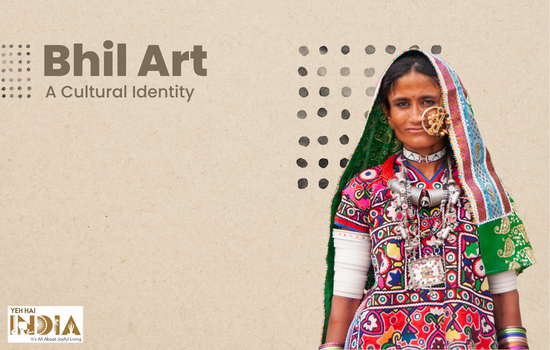
The Bhils are known for their vibrant culture and unique language. They have their own dialect, which is a blend of Rajasthani, Gujarati, and Marathi dialects.
They also have their own traditional dance forms, such as the Bhil Bhagori, which is popular in North India.
Bhil women are also noted for their traditional jewellery, which is intricately designed and made of silver, brass, and other metals.
Their beautiful handicrafts include hand-woven cotton fabrics, terracotta pottery and jewellery.
The Bhils have maintained their distinct identity and culture despite the various challenges they have faced over the years, such as displacement and forced migration.
They are very proud of their cultural heritage and continue to practice their traditional beliefs and customs.
They are also very welcoming to outsiders and are eager to share their culture and experiences with others.
Folklore & Mythology
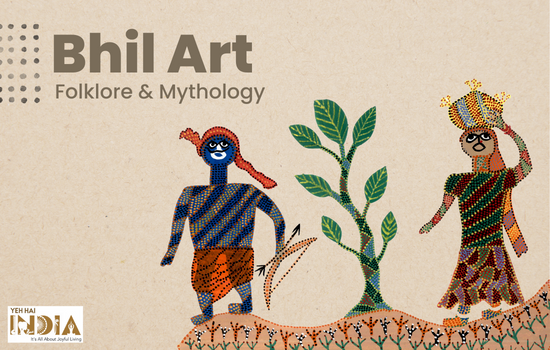
The Bhil tribe is known for its folk tales and mythology which are also an intrinsic part of their art forms. These stories tell their history and culture and often contain lessons about life.
They also have a rich tradition of folk literature, including songs, proverbs, and riddles. The tribe also has its own unique language, Bhili, which is used in many of their folklore stories.
The Bhil tribe is an important part of India’s cultural heritage and their art and folklore are still widely celebrated today.
Diverse Artwork
The Bhil tribe has a strong tradition of folk arts that includes painting, metalwork, and wood carving.
The most popular form of artwork is the Bhil wall painting. These paintings depict tribal gods, animals, plants, and other symbols of the tribal culture.
The artwork is usually colourful and vibrant and often portrays stories, legends, and mythology.
Bhil metalwork involves creating intricate designs on metal objects, such as jewellery and weapons.
Wood carving is also a popular form of art among the Bhil tribe. They use wood to create sculptures, masks, and other artefacts.
Bhil Paintings
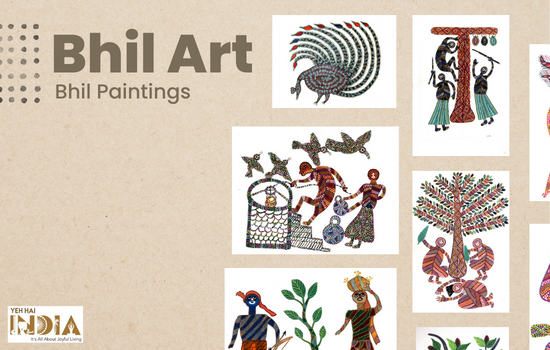
The Bhil paintings are an important part of the Bhil culture and help to preserve their traditions.
They are also an important part of the Indian art world and are highly sought after by collectors. For this reason, the prices for these paintings can be quite high.
These paintings are some of the oldest and most traditional forms of art in the country. Their vivid colours and intricate designs characterize them.
These paintings often depict scenes from the Bhil mythology, folklore and people’s everyday life, such as hunting, dancing, festivals, and weddings.
The Bhil paintings are typically done on walls and floors using natural pigments. The pigments are derived from a variety of minerals, plants, and other natural materials.
The colours typically used are red, yellow, green, blue, black, and white.
The paintings are usually done on mud walls or floor mats and are often created as part of a festival or wedding decoration for their homes.
The images are quite intricate and the artists make use of various techniques such as shading and outlining to make them more interesting.
The Bhil paintings are a unique and interesting form of art that has been practised for centuries.
They are a beautiful way to remember and celebrate the Bhil people’s culture and history.
Bhil Trademark Pattern: The Dots
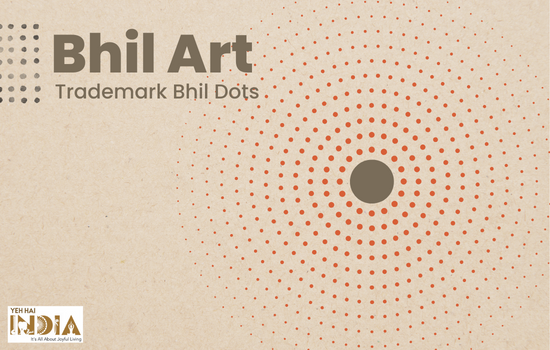
Bhil paintings include dots that are used to represent various elements and have a symbolic meaning. They are also used to create patterns and illustrate stories.
By combining different types of dots, Bhil artists can create intricate, detailed designs that tell a story and bring meaning to the artwork.
The technique of Bhil painting begins with the mastering of the dots. The dots are multihued, arranged in particular rhythms to depict the image from the mind of the artist.
The dots are said to be inspired by the kernels of maize and each group of dots usually represents a deity or a particular ancestor.
These dots also are the trademark of each artist who finds a way to make the dot patterns their signature.
Traditional Pithora Art

Pithora painting is a type of painting, usually done on the walls of mud houses called Pithora. These paintings usually depict a variety of themes, including scenes from mythology, animal figures, and plants and trees.
They are brightly coloured, typical of Bhil artwork and are used to decorate the interior of the house. Pithora paintings are also believed to bring good luck and success to the home.
Such ritualistic paintings including the Kothi Relief Work are usually done by badwas or specially appointed male members.
Today, artists have accepted other media such as acrylic and canvas as well to express their art along with the traditional medium.
Recommended Story – Gond Art: Showcasing The Folk Heritage Of Gond Tribe
Significance of Gatalas
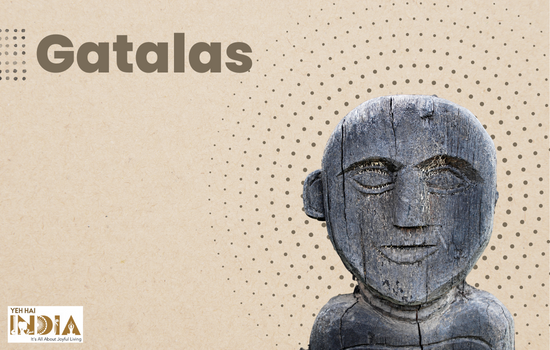
Gatala or a memorial stone is erected in their fields to remember their ancestors and family members who have passed away.
The stone bears the painting of a man riding a horse with a sun and moon on his left and right side.
The tribe’s priest decides the date and time for the sanctification of each Gatala during which the family prays for the spirit to bless them and their clan.
This event includes the ritualistic sacrifice of five goats and imbibing the spirit prepared from the Mahua flower.
The families invite and include all the villagers in the feasts and drinks in commemoration of the spirit.
Some Famous Bhil Artists:
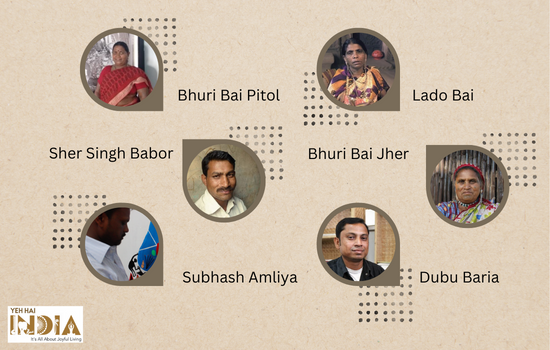
- Bhuri Bai Pitol
- Sher Singh Babor
- Subhash Amliya
- Lado Bai
- Bhuri Bai Jher
- Dubu Baria
For an insight into the tribal culture prevailing in the heart of India, Bhil art is worth taking note of in your everyday life.
Also Read – 10 GI Protected Art Forms of India











Good Information about bhil paintings. Thank you mam.